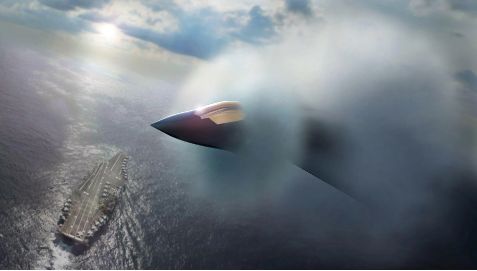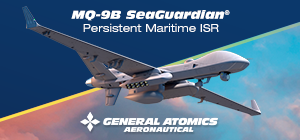
Boeing has released a computer-generated image of its proposal for the US Navy's F/A-XX fighter jet. Even though it is only a conceptual rendering, it nonetheless provides valuable points for analysis, particularly given its resemblance to Boeing’s F-47, selected by the U.S. Air Force under the Next Generation Air Dominance (NGAD) program. In fact, it would appear that the F/A-XX and the F-47 have numerous design features in common.
The tail surfaces are not visible, while the canopy appears very similar to that shown in the illustrations of the F-47. The radome appears shorter than that of the fighter intended for the USAF, but this could be due to the angle/perspective. Furthermore, it would appear, with the benefit of hindsight, that the F/A-XX is equipped with front canard wings, but the image remains (deliberately) ambiguous on this point. In addition, as these are conceptual images, there may also be an element of misdirection, both for the F-47 and the F/A-XX. If they were indeed present, the canard surfaces would be particularly useful for a carrier-based aircraft such as the F/A-XX, as they improve maneuverability at low speeds, which is essential during approach and landing on aircraft carriers (although this solution also has disadvantages - in terms of hangar space - greater exposure to corrosion, etc., so much so that the only Western carrier-based fighter equipped with canards is the french RAFALE-M).
As for the tail of the aircraft, even if it is completely hidden, it is conceivable that, as shown in previous renderings of Boeing's 6th generation carrier-based fighters, the F/A-XX will also have a tailless design, useful for optimizing stealth, but with some sacrifice in terms of maneuverability. To compensate, Boeing may have planned to use thrust vectoring and/or canards on both the F-47 and the F/A-XX. From a technical standpoint, the USAF's F-47 is expected to adopt a variable cycle engine, while the F/A-XX could use a derivative version.
Both programs have seen their range requirements scaled back: the US Navy fighter should guarantee a range only 25% greater than current carrier-based aircraft, while for the F-47, the USAF is now talking about “1,000+” nautical miles, a significant improvement but less than initial expectations for large-scale deployment in the Indo-Pacific theater. The new Boeing rendering arrived a few weeks after Northrop Grumman's rendering for the F/A-XX program was unveiled, revealing both conceptual illustrations of the 2 contenders remaining in the competition.
Northrop's rendering of the aircraft does not show canard wings and features a design clearly focused on stealth, with smooth, continuous surfaces and an almost organic appearance. The new Boeing rendering, on the other hand, seems to confirm the company's previous statements that there would be no problems in building both the 6th generation fighter for the USAF (F-47) and the one for the US Navy (F/A-XX). Boeing has spent a lot of resources and energy dispelling the numerous doubts raised by Navy and Pentagon officials about its ability to build two advanced fighters in parallel. In particular, the company has invested heavily in the development of a new advanced fighter aircraft assembly plant in St. Louis, Missouri, which should be capable of producing both the F-47 and the F/A-XX, should the latter project be selected.
According to reports, the Navy was close to announcing the winner of the F/A-XX competition in March. However, in June, the Pentagon froze the program as part of the FY 2026 budget, stating that it wanted to avoid competition with the F-47 program. Uncertainty surrounding the F/A-XX therefore remains high. However, in recent months, senior US Navy officials have publicly expressed their support for the continuation of the project, as have numerous members of Congress.








.png)
